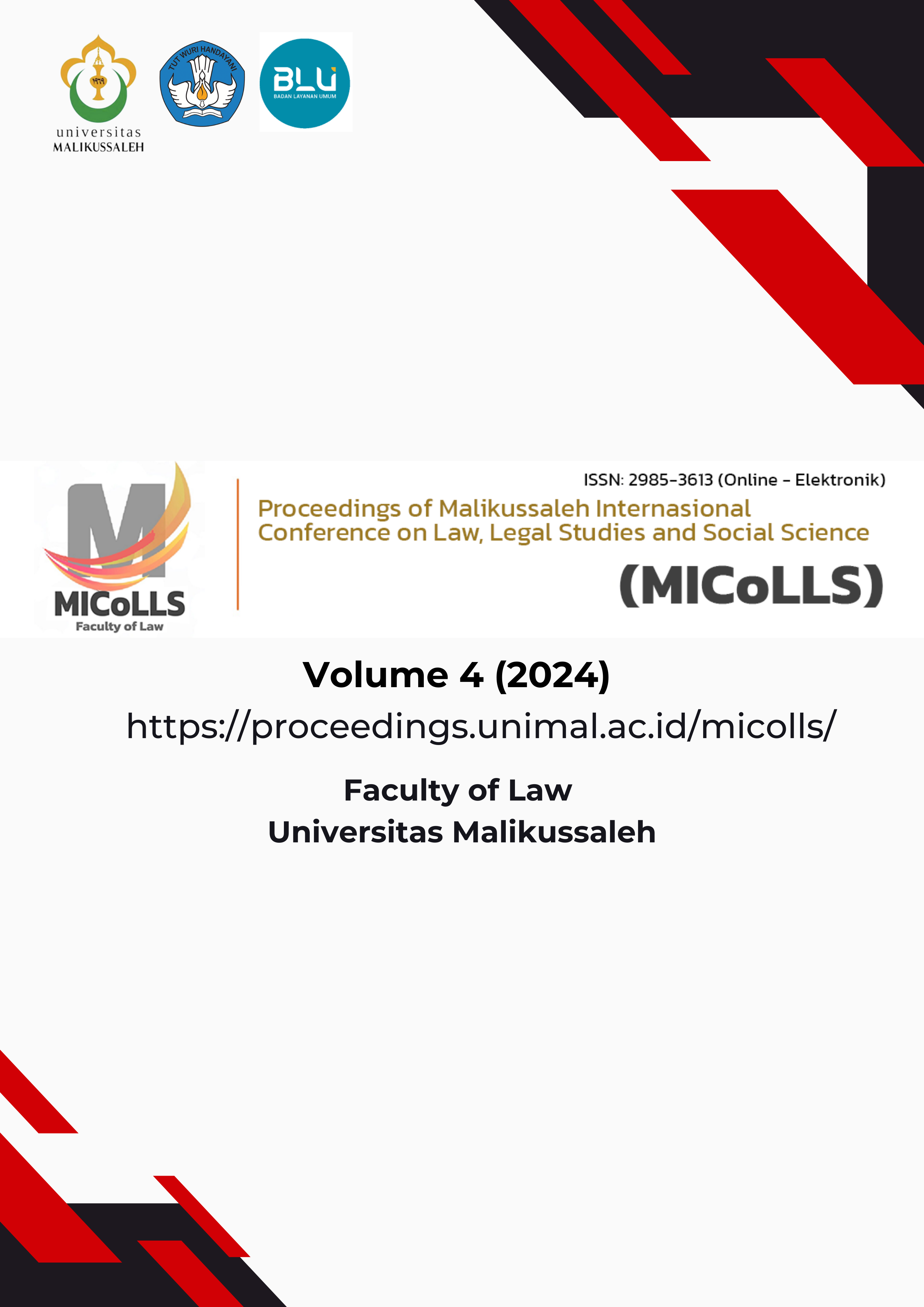The Role of Forensic Technology in Cyber Crime Investigation and Prosecution
Keywords:
Forensic Investigation Technology, Investigation, Criminal Acts, Cyber CrimeAbstract
In the era of globalization, technological advances offer various conveniences but also bring challenges in the form of increasingly complex digital crimes. Cybercrimes such as online fraud, which occurred for example in Banyuwangi in June 2020, show how technology can be used for crimes with a low risk of detection. Digital forensics plays an important role in the investigation and investigation of cyber crimes, identifying perpetrators, and revealing important evidence from the electronic devices used. This study uses a quantitative approach with a normative legal framework, analyzing the role of digital forensics in uncovering cyber crimes based on Law No. 19 of 2016 concerning Amendments to Law No. 11 of 2008 concerning Information and Electronic Transactions (ITE) and the Criminal Procedure Code. The results of the study show that digital forensics is effective in tracking digital evidence, such as application conversations and online transaction traces, which support investigations and inquiries. The use of electronic evidence as regulated in Article 5 paragraph (1) of the ITE Law is very important in ensuring valid evidence in court. This study suggests the need for continuous innovation in digital forensic techniques and supporting regulations so that law enforcement can keep up with technological developments and prevent misuse of technology in cyberspace.
References
Årnes, André, ed. Digital Forensics. John Wiley & Sons, 2017.
Casey, Eoghan. Digital Evidence and Computer Crime: Forensic Science, Computers, and the Internet. Academic Press, 2011.
Casey, Eoghan. Handbook of Digital Forensics and Investigation. Academic Press, 2009.
Daniel, Larry, and Lars Daniel. Digital Forensics for Legal Professionals: Understanding Digital Evidence from the Warrant to the Courtroom. Elsevier, 2011.
Hansen, Mark. Embodying Technesis: Technology Beyond Writing. University of Michigan Press, 2000.
Hunter, Dan. "Cyberspace as Place and the Tragedy of the Digital Anticommons." In Law and Society Approaches to Cyberspace, pp. 59-139. Routledge, 2017.
Johnson, Mark. Cyber Crime, Security and Digital Intelligence. Routledge, 2016.
Kruse II, Warren G., and Jay G. Heiser. Computer Forensics: Incident Response Essentials. Pearson Education, 2001.
Marcella Jr, Albert, and Doug Menendez. Cyber Forensics: A Field Manual for Collecting, Examining, and Preserving Evidence of Computer Crimes. Auerbach Publications, 2010.
Shinn, Terry. "New Sources of Radical Innovation: Research-Technologies, Transversality and Distributed Learning in a Post-Industrial Order." Social Science Information 44, no. 4 (2005): 731-764.
Wall, David S. Cybercrime: The Transformation of Crime in the Information Age. John Wiley & Sons, 2024.
Wardani, Kusuma, Dian Eka, and Slamet Sampurno Soewondo. "Electronic Evidence in Criminal Procedural Law." JL Pol'y & Globalization 104 (2020): 1.
Downloads
Published
Issue
Section
License
Copyright (c) 2025 Nadia Khairunnisa Iswani, Muhammad Nur, Husni Husni

This work is licensed under a Creative Commons Attribution-ShareAlike 4.0 International License.
Authors retain the copyright and grant the proceeding the right of first publication. This work is licensed under a Creative Commons Attribution-ShareAlike 4.0 that allows others to share the work with an acknowledgement of the Creative Commons Attribution-ShareAlike 4.0 that allows others to share work with an acknowledgement of the works authorship and initial publication in this proceeding.
All articles in this proceeding may be disseminated by listing valid sources, and the article's title should not be omitted. The content of the article is liable to the author.
Authors are able to enter into separate, additional contractual arrangements for the non-exclusive distribution of the proceeding's published version of the work (e.g., post it to an institutional repository or publish it in a book), with an acknowledgement of its initial publication in this proceeding.
Authors are permitted and encouraged to post their work online (e.g., in institutional repositories or on their website) before and during the submission process, as it can lead to productive exchanges and earlier and greater citation of published work.
In the dissemination of articles, the author must declare the Proceedings of Malikussaleh International Conference on Law, Legal Studies and Social Science (MICoLLS) as the first party to publish the article.






